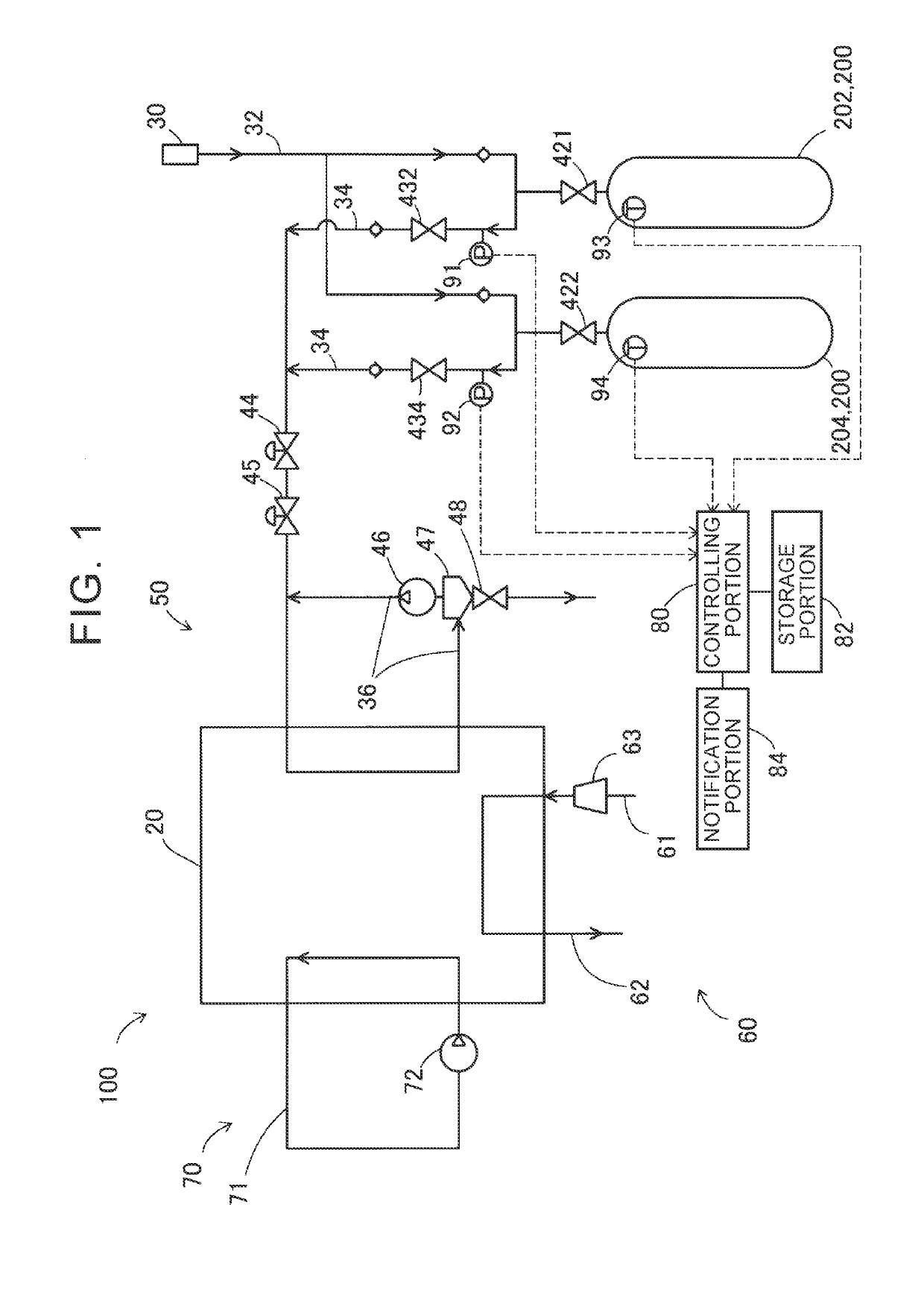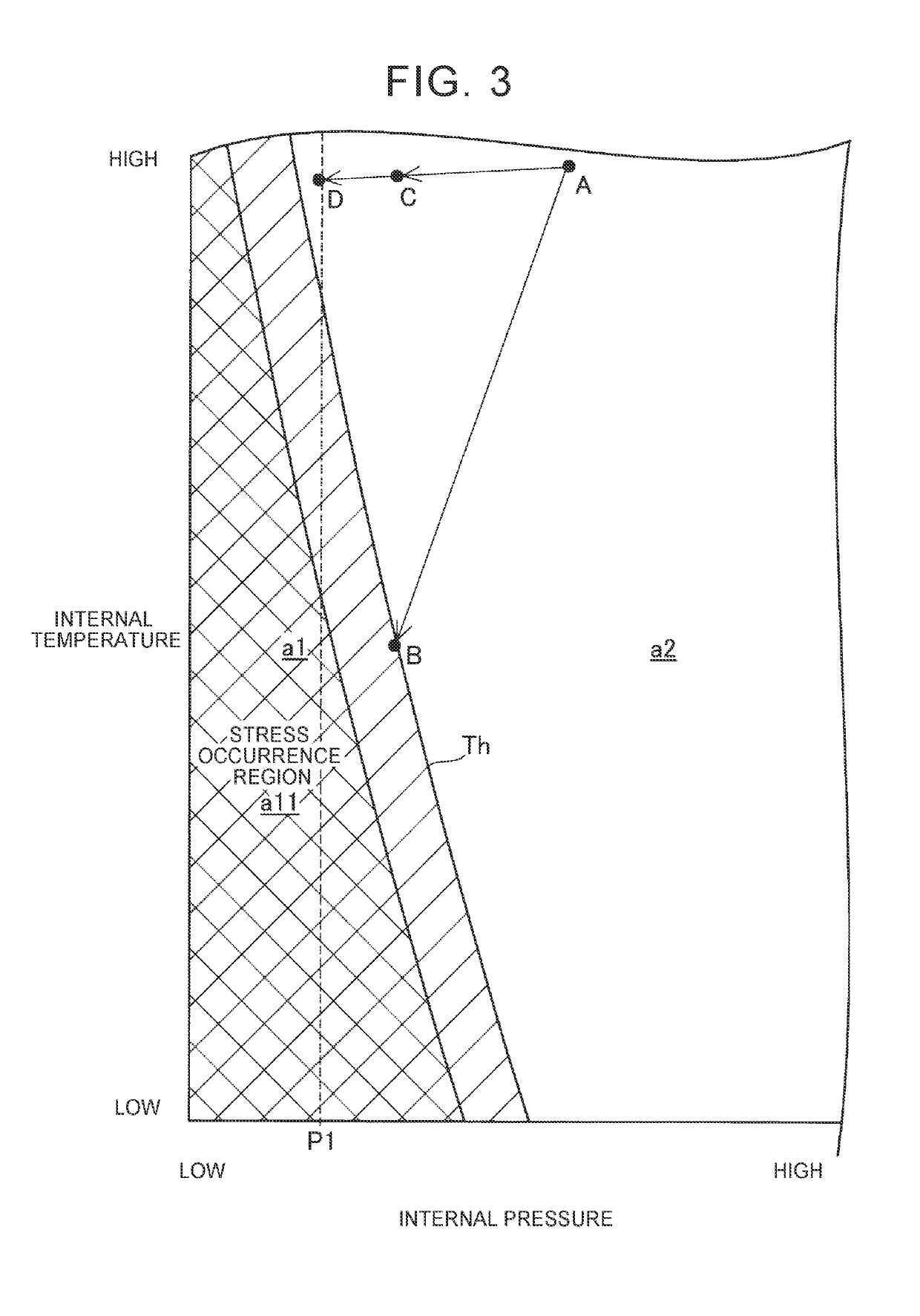Fuel cell system and control method for fuel cell system
a fuel cell and control method technology, applied in the direction of electrical generators, vessel construction details, transportation and packaging, etc., can solve the problems of affecting the operation of the fuel cell system, and the residue liner might be damaged, so as to reduce the possibility, the effect of increasing the temperature and pressur
- Summary
- Abstract
- Description
- Claims
- Application Information
AI Technical Summary
Benefits of technology
Problems solved by technology
Method used
Image
Examples
first embodiment
A. First Embodiment
[0025]FIG. 1 is a diagrammatic view of a fuel cell system 100 according to the first embodiment. The fuel cell system 100 includes a fuel cell stack 20, a fuel gas supply / discharge mechanism 50, an oxidant gas supply / discharge mechanism 60, a refrigerant circulation mechanism 70, a controlling portion 80, a storage portion 82, and a notification portion 84. The fuel cell system 100 generates electric power by a reaction between a fuel gas (anode gas) and an oxidant gas (cathode gas). In the present embodiment, the fuel gas is hydrogen gas, and the oxidant gas is air.
[0026]The refrigerant circulation mechanism 70 is connected to the fuel cell stack 20 and includes a refrigerant circulation passage 71 through which a refrigerant (e.g., water) circulates and a pump 72 configured to send out the refrigerant. The oxidant gas supply / discharge mechanism 60 includes an oxidant gas supply passage 61 through which the oxidant gas is supplied to the fuel cell stack 20, and a...
second embodiment
B. Second Embodiment
[0059]FIG. 5 is a schematic view of a high-pressure tank 400 according to the second embodiment. FIG. 5 illustrates a sectional structure obtained when the high-pressure tank 400 is cut along a central axis CX of the high-pressure tank 400. The high-pressure tank 400 used in the fuel cell system 100 of the second embodiment is different from the high-pressure tank 200 of the first embodiment in that a central part of the high-pressure tank 400 in its longitudinal direction is provided with a bonded part 410 where the resin liner 210 and the reinforcing layer 220 are bonded to each other over the circumferential direction of the resin liner 210. In the following description, the same constituent as that in the first embodiment has the same reference sign as in the first embodiment, and its detailed description is omitted.
[0060]The resin liner 210 and the reinforcing layer 220 at the bonded part 410 are bonded to each other, for example, such that a mold releasing ...
PUM
| Property | Measurement | Unit |
|---|---|---|
| Pressure | aaaaa | aaaaa |
| internal temperatures | aaaaa | aaaaa |
| electric power | aaaaa | aaaaa |
Abstract
Description
Claims
Application Information
 Login to View More
Login to View More - R&D
- Intellectual Property
- Life Sciences
- Materials
- Tech Scout
- Unparalleled Data Quality
- Higher Quality Content
- 60% Fewer Hallucinations
Browse by: Latest US Patents, China's latest patents, Technical Efficacy Thesaurus, Application Domain, Technology Topic, Popular Technical Reports.
© 2025 PatSnap. All rights reserved.Legal|Privacy policy|Modern Slavery Act Transparency Statement|Sitemap|About US| Contact US: help@patsnap.com



